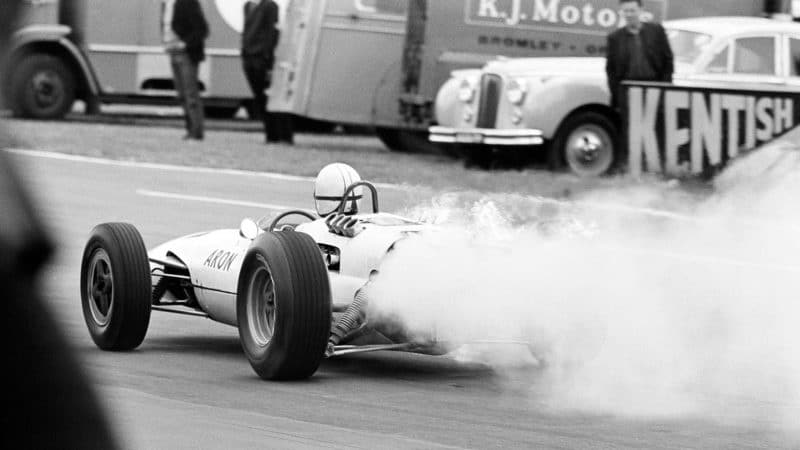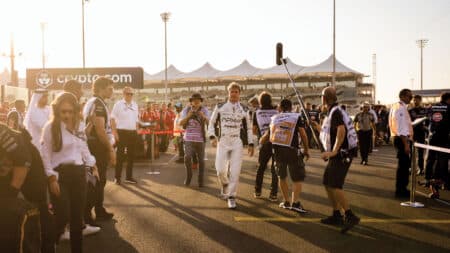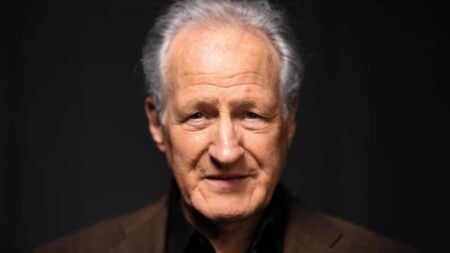The storyline centres on the battle for the Formula 1 world championship. American driver Pete Aron, who has five wins to his credit but none in the previous three seasons, collides with his Jordan-BRM team-mate Scott Stoddard at Monaco. Aron is dismissed on the spot by his super-irate boss Jeff Jordan, while the gravely ill Stoddard fights for his life. Out of a drive, Aron finds solace in the arms of Stoddard’s wife, Pat. The former model is bored of being married to a man who lives in the shadow of his dead brother, 1958 world champion Roger Stoddard. Meanwhile… Corsican superstar Jean-Pierre Sarti is determined to claim a third title, but finds a distraction from his loveless marriage in the form of fashion magazine editor Louise Frederickson, who is following the GP circus for an article. His former Manetta-Ferrari team-mate, Aron, appeals to the boss of his old squad for a drive, only to be rebuffed. He is obliged to take a job as a commentator instead.
No matter, he is subsequently offered a seat by Japanese industrialist Izo Yamura and goes on to win the next two rounds. By this time, Stoddard is well enough to race again and is soon challenging for the title. After the British Grand Prix, four drivers – Aron, Stoddard, Sarti and his team-mate, Sicilian motorcycle champion turned car racer Nino Barlini, are vying for the prize. In the title decider at Monza, Sarti stalls his car at the start, recovers, and charges through the pack only to perish in a grisly accident. Manetta-Ferrari withdraws Barlini which leaves Aron and Stoddard to slug it out for the drivers’ crown. In a photo finish, Aron narrowly wins from Stoddard, who has by now been reunited with Pat. The end.
This is a mere thumbnail sketch of a film that marries race action with soap-opera melodrama. As for the choice of actors, Frankenheimer claimed in later years that he wanted an unknown actor to play Aron, but his MGM paymasters insisted on Steve McQueen. The ‘Cooler King’, however, blew hot and cold. He didn’t get along with Grand Prix producer Ed Lewis, so baled on the project and flew to Taiwan to make The Sand Pebbles instead. James Garner, erstwhile star of hit TV series Maverick, ultimately landed the role despite the director’s objections.

During one scene Garner had to drive half-a-mile of Brands Hatch with his car on fire. He was insured for $1m, but it would hardly pass health and safety now…
Getty Images
He recalled in The Garner Files by Jon Winonkur: “I think he [Frankenheimer] was looking for someone he could control. He had worked a lot with Burt Lancaster, and Burt always had an opinion. But both Lewis and the studio wanted me, and they overruled Frankenheimer.” Garner was joined by Yves Montand as Sarti, Eva Marie Saint as Frederickson, Antonio Sabàto as Barlini (in only his second-ever film role), pouty pop chanteuse Françoise Hardy as his love interest, theatre actor Brian Bedford as Stoddard and Jessica Walters as his wife. The brilliant Toshiro Mifune played Izo Yamura in his first English-speaking role, although he was later dubbed by a different actor.
From all accounts, Frankenheimer wasn’t one to suffer fools gladly or otherwise and got things done through sheer force of will. He insisted on realism and, as such, refused merely to borrow cars, have them tootle around a track and speed up the footage later. Legend has it, perhaps apocryphally so, that he had hoped to field his own Formula 1 team, shooting exterior and in-car footage at each round of the ’66 championship, but the plan was nixed on cost grounds. The production team then tapped each constructor for technical drawings from which the special effects department could produce replicas of each car.
None was forthcoming. Shock.
Unbowed, he contacted racer-turned-motor mogul Carroll Shelby for advice. His star driver Bob Bondurant recalls: “I was out at Riverside in 1965 testing the new GT350. Shelby called me in to meet someone he was talking to in the pits. It was John Frankenheimer. John explained how he was going to make an epic film about F1 racing and Carroll suggested that I spend some time with him the following day out at Willow Springs with the GT350. I would show him from inside the car what racing on a track was really like; go through all the fundamentals. I wanted him to make the film as authentic as possible. From there we hit it off and I was invited to be the movie’s technical advisor and a driving double for the actors.”
Bondurant was one of more than 20 active or retired top-line drivers who participated in the shoot, with the likes of Graham Hill, Richie Ginther, Bruce McLaren, Jo Bonnier and Jochen Rindt also having minor speaking roles. As for the real actors, Bedford couldn’t drive, Montand had owned several fast road cars while Sabàto had zero experience on four wheels but reputedly made up for this with bravado.
Garner, meanwhile, was a keen driver, and used to stage impromptu ‘Brentwood Grands Prix’ with McQueen where they would terrorise the locale in identical Mini Coopers. However, unlike his next-door neighbour, he had never been on-track before Bondurant took him under his wing. “James was a great natural driver. He listened and took direction very well,” he recalls. “We started in a GT350, moved on to a 289 Cobra and then a Formula Junior. Later on, we borrowed a BRM F1 car and he took a few laps in that as well.”
The other ‘drivers’ were coached by Jim Russell, who also oversaw the construction of replica F1 cars based around Lotus 20/22 Formula Juniors. In addition, the production company acquired a Lotus 25/33 (which appeared on-screen as a ‘Yamura’) and either bought, leased or borrowed other Lotus F1 cars and a BRM. There was, however, a rather more pressing issue: McQueen and The Great Escape director John Sturges had teamed up to make their own racing drama, which not only irritated Frankenheimer but fostered a rivalry between Garner and McQueen that became increasingly toxic, if only from McQueen’s side. They didn’t speak again for two years. The race was on.








